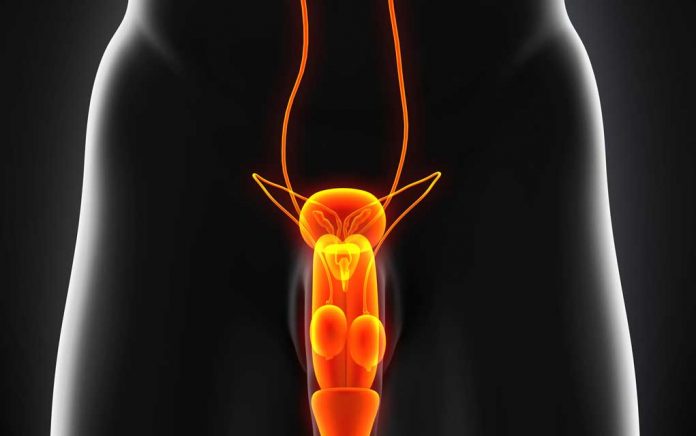
The testicles are the reproductive center of the male and many physiological and emotional conditions can be traced back to these two small organs. It is important to have a foundation of knowledge regarding the anatomy and physiology of the testes before attempting to understand the role this organ plays in maintaining a man’s general health.
Anatomy of a Testis
Approximately the size of a walnut, the testicles consist of two round and firm organs located in a pouch-like sac called the scrotum. Do not let the size of the testicles fool you, as they are a powerhouse of complex tubules that manufactures sex hormones, sperm, and semen. For optimal health (of sperm cells), the scrotum is about two degrees cooler, than the rest of the body. This accounts for the fact that sometimes the scrotum will lie closer to the body and conversely, hang lower when body temperature rises.
Sperm: Production and Maturation
Beginning with puberty and throughout a man’s life, sperm are produced in the seminiferous tubules located inside each testis. Once produced, maturation is finished in the epididymus, a cordlike structure that looks like a hat and lies alongside the front border of the testicle. This structure also provides transportation for the matured sperm cell. It is important to note, sperm at this stage of development lack the ability to swim forward (motility). Therefore, sperm leave the epididymus through peristalsis movement (milking) into the vas deferens.
Transportation & Storage of a Matured Sperm Cell
The matured sperm cells leave the epididymus, and travel through a long pathway called the vas deferens. The vas deferens transports the sperm to the ampulla, for storage until ejaculation. Sperm can live in storage for as long as forty-two days and still be fertile. Although sperm are rarely stored for this long.
Ancillary Organs Turn Sperm into Semen
Upon ejaculation, the sperm leave the ampulla and pass through the seminal vesicles, prostate, and Cowper’s glands (bulbourethral) where they are bathed with special fluids. The combination of fluids and sperm, now referred to as semen, is essential and provides a number of specialized functions. One of the functions of this fluid cocktail is to protect the sperm, and provide an environment conducive to fertilization. This fluid cocktail also helps to nourish the sperm, aid in motility, prevent clumping, a neutralize acids remaining in the urethra.
The semen passes through one more pathway (ejaculatory duct) before it can enter the penis for ejaculation out of the body. The ejaculatory duct is formed from the bifurcation or division of the seminal vesicles and the ampulla. It is a rather short duct and terminates into the urethra.
Urethra – A Passageway for Both Urine and Sperm
In the male, the urethra serves as a passageway for both urine and semen. The urethra is a long thin-like tube that extends from the bladder through the penis to provide an avenue for the passage of urine from the body. The prostate gland is located in front of the rectum and below the bladder; it surrounds the upper part or the neck of the urethra. The ejaculatory duct enters the front part of the prostate and terminates in the prostate portion of the urethra. The final trek for the semen is through the remaining portion of urethra and out from the body.
What Prevents Urine & Semen from Mixing
If the urethra serves both the urinary and reproductive systems, then can a man accidentally urinate, while making love or conversely, ejaculate while urinating? A fair question and one that can easily be answered with a resounding no, in a healthy male. A full bladder triggers the sensation or urge to urinate. Men figure it out early on that it is best to urinate before having sex; otherwise, the pressure from the bladder might prevent a full erection. In addition, the prostate, which surrounds the neck of the urethra, also functions to prevent urine from passing during sex.
The testicles are an important component of the male reproductive organs. Both men and women need to understand the basic anatomy and physiology of the testes to aid in early detection and medical intervention of health related problems.




